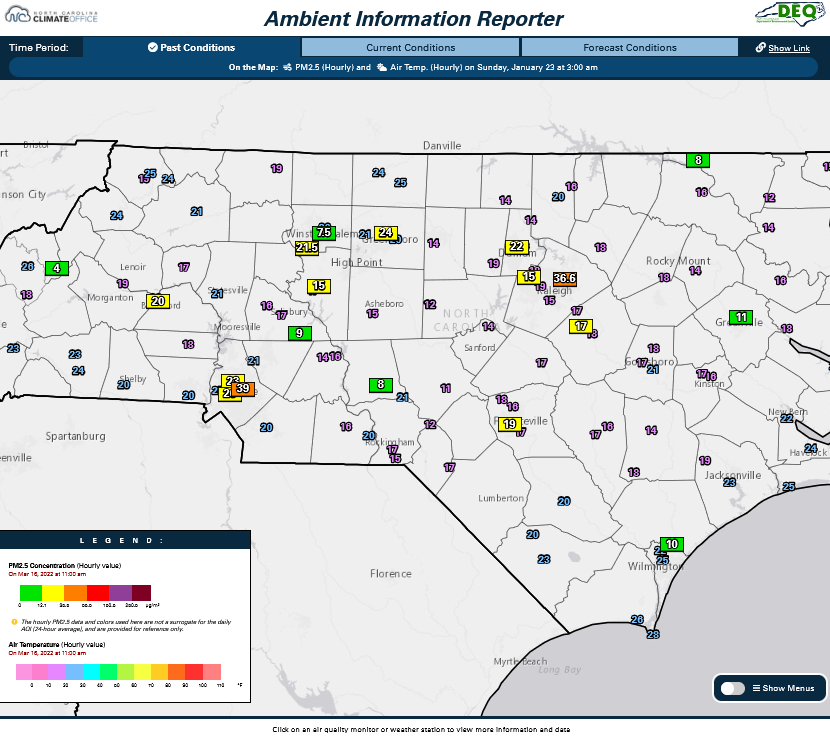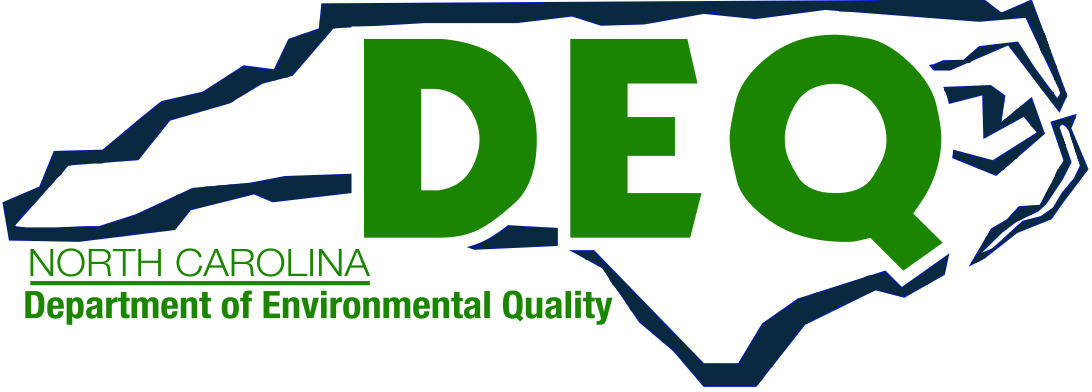Have you noticed how fine particulate readings in the morning are often higher than the afternoon during the winter months? This is often due to something called a surface temperature inversion. Typically, the temperature of the air will cool with height as the sun heats the ground, warming the air at the surface. In the winter months, we often see the opposite: warm air above a pool of colder air so the atmospheric profile is “inverted” from what we typically expect. Although we do see temperature inversions in the summertime, they often aren’t as strong due to a number of elements specific to winter including stronger surface high pressure systems and lighter winds over the region. Additionally, the surface air is much colder and denser in the winter, resulting in a strong temperature inversion/cap above it. This is enhanced by a couple of different factors:
- The sun is lower on the horizon and supplies less warmth to the surface and more warmth to the atmosphere.
- Longer nights allow for more prolonged cooling to occur.
Effects of Snowpack
On nights with clear skies and calm winds, this effect is more strongly pronounced–a lack of cloud cover will allow surface temperatures to cool more quickly, while calm winds inhibit wind-driven mixing of warmer air aloft down to the surface. When there is snowpack, surface cooling is enhanced even further which results in a stronger temperature inversion, which can further elevate pollution values. Check out some of the hourly overnight readings over the Piedmont following the 1/20-1/22 snowstorm for a great example of this! https://bit.ly/3FWQUvT

Temperature Inversion, Limited Dispersion
So how does this affect air pollution levels? The warm air aloft acts as a lid on the air near the surface, which traps pollution at or just above ground-level. Here in North Carolina, our primary pollutant of concern in the winter is from fine particle pollution. Smoke from wood burning stoves, or even transported smoke from seasonal burning across the southeast, can result in elevated fine particulate levels.
However, surface temperature inversions in some areas out west can actually result in elevated readings of ozone as well. While summertime ozone chemistry is well-studied and understood, wintertime ozone is a relatively new phenomenon. Preliminary evidence suggests that surface temperature inversions concentrate VOCs sufficient for ozone production, while the presence of snow reflects incoming sunlight to help accelerate it. Occasionally, we will see the same phenomenon in our high elevation sites — especially in spring — where strong temperature inversions lead to elevated ozone readings.

 Air Quality Portal
Air Quality Portal